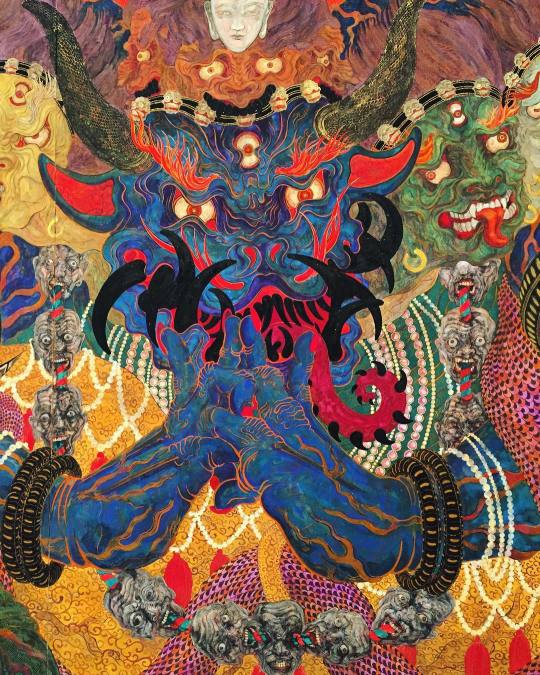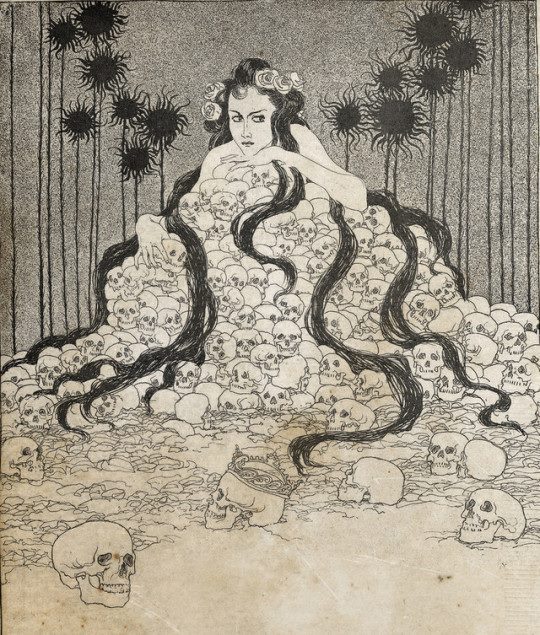Text

Lucifer, Cornelis Galle the Elder, after Lodovico Cardi (1595)
909 notes
·
View notes
Photo

“Mt Fuji vu de la plage de Mito-hama“ de
Itō Shinsui 伊東深水 (1898 - 1972).
405 notes
·
View notes
Photo

Jesús Carlos de Vilallonga - House of the Great Complex [oil on masonite, 1985]
2K notes
·
View notes
Photo

Kaneko Tomiyuki - 妖怪 (Yōkai) [mineral pigments, Japanese ink, transparent watercolor, acrylic, pen foil on Japanese paper, 2017]
18K notes
·
View notes
Photo

Gallic Druids (according to Caesar)
According to Julius Caesar, who is the principal source of information about the Druids, there were two groups of men in Gaul that were held in honour, the Druids and the noblemen (equites). Caesar related that the Druids took charge of public and private sacrifices, and many young men went to them for instruction.
One Druid was made the chief; upon his death, another was appointed. If, however, several were equal in merit, the Druids voted, although they sometimes resorted to armed violence. Once a year the Druids assembled at a sacred place in the territory of the Carnutes, which was believed to be the centre of all Gaul, and all legal disputes were there submitted to the judgment of the Druids.
Caesar also recorded that the Druids abstained from warfare and paid no tribute. Attracted by those privileges, many joined the order voluntarily or were sent by their families. They studied ancient verse, natural philosophy, astronomy, and the lore of the gods, some spending as much as 20 years in training. The Druids’ principal doctrine was that the soul was immortal and passed at death from one person into another.

The Druids offered human sacrifices for those who were gravely sick or in danger of death in battle. Huge wickerwork images were filled with living men and then burned; although the Druids preferred to sacrifice criminals, they would choose innocent victims if necessary.
340 notes
·
View notes
Photo

Dagger (42.5 cm) with skeleton/death hilt, France 19th c.[534x800]
3K notes
·
View notes
Text
Thomas Sturge Moore (1870 - 1944) ~ The Dress as Beautiful as the Sun, Woodcut, 1902

31 notes
·
View notes















